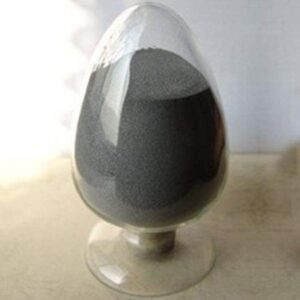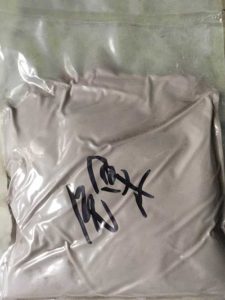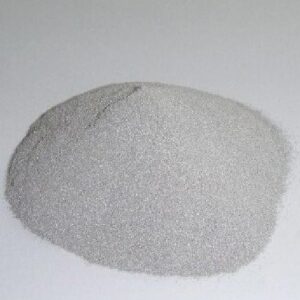HY-industry introduces to you the situation of nickel-based alloy powder in China. (HY Technology Center)
Nickel base alloy powder

-
Nickel base alloy powder is the most widely used one of the self-fluxing alloy powders. It has excellent comprehensive performance, corrosion resistance, oxidation resistance, heat resistance, low stress abrasive wear and good impact toughness. The melting point is low, the solid solution temperature range is wide, and it has strong wetting ability to various substrates and WC particles, and is easy to operate.
-
Excellent in self-fluxing, wettability and spray weldability. The spray-welded layer has high hardness, corrosion resistance, wear resistance and heat resistance, and is difficult to cut. It is suitable for wet grinding.
Nickel-based alloy powder powder grade representation
-
In front of the brand, the Chinese pinyin letter F is used to indicate the powder. The grade itself has three parts.
-
The base class, 1-nickel group, 2-cobalt group, 3-iron group is represented by the Arabic numeral 1.2.3.
Example: F32-40
F represents spray-welded alloy powder, 3 represents powder type (iron-based), 2 represents plasma spray welding, and 40 represents spray-welded layer hardness reference value.
Nickel base alloy powder chemical composition:
| Grade | chemical composition(%) | hardness(HRC) | field | |||||||
| C | Cr | Si | B | Fe | Ni | Cu | Mo | |||
| F101Fe | 0.30-0.70 | 8.0-12.0 | 2.5-4.5 | 1.8-2.6 | ≤12 | rest | 40-50 | For wear and corrosion protection or preventive protection, and for good performance in environments below 650 °C, such as high temperature resistant valves, pump rotors, pump plungers, etc. | ||
| F101 | 0.30-0.70 | 8.0-12.0 | 2.5-4.5 | 1.8-2.6 | ≤4 | rest | 40-50 | Better corrosion resistance than F101Fe | ||
| F102Fe | 0.60-1.0 | 14.0-18.0 | 3.5-5.5 | 3.0-4.5 | ≤15 | rest | ≥55 | With F101Fe soldering layer, it has high hardness and excellent resistance to metal-to-metal wear. It is used for spray welding of shafts, molds and plungers. Quite the grades Ni2, Ni60 | ||
| F102 | 0.60-1.0 | 14.0-18.0 | 3.5-5.5 | 3.0-4.5 | ≤5 | rest | ≥55 | Better corrosion resistance than F102Fe | ||
| F103 | ≤0.15 | 8.0-12.0 | 2.5-4.5 | 1.3-1.7 | ≤8 | rest | 20-30 | Used for repairing and preventive protection of cast iron parts at high or normal temperatures, such as glass molds, engine cylinders, machine tool guides, etc. Equivalent to Ni4, Ni-1 | ||
| F104 | 0.60-1.0 | 14.0-18.0 | 3.5-5.5 | 3.5-4.5 | ≤5 | rest | 2.0-4.0 | 2.0-4.0 | ≥55 | The hardness of the F101 welding layer is relatively high, and the shape is irregular and the corrosion resistance is required. The parts with a spray-welded layer exceeding 2.5 mm are suitable, such as corrosion-resistant pump parts, plungers, corrosion-resistant valves, etc. |
| F105Fe | F102Fe+35% WC | ≥55 | For applications where strong abrasive wear is required, such as guides, screeds, fan blades | |||||||
| F105 | F102+50% WC | ≥55 | same with F105Fe | |||||||
| F106 | ≤0.15 | 8.0-12.0 | 2.5-4.5 | 1.7-2.1 | ≤8 | rest | 30-40 | For the repair and preventive protection of parts under small energy and multiple impact conditions, such as valves, gears, impact sliders, etc. | ||
| F108 | F102+80%WC | ≥55 | It has better anti-abrasive wear performance than F105 and is extremely difficult to process. It is often used for spray welding without machining, such as dredger teeth, fan blades, scrapers, etc. | |||||||
| F109 | 0.4-0.8 | 14.0-16.0 | 3.5-5.0 | 3.0-4.0 | ≤15 | rest | 24.0-26.0 | ≥50 | Used in dangerous goods warehouses, ports and chemical industries, such as forklifts, shovel feet, hooks, etc., which need to be rubbed, non-sparking and wear-resistant. | |
Nickel-based alloy powder technical requirements

-
The chemical composition of the powder and the hardness of the spray-welded layer, please refer to the table contents, in which the chemical composition, the hardness of the spray-welded layer and the particle size are the evaluation indicators.And the basis of quality inspection, oxygen content and melting point are not used as the basis for quality inspection.
-
powder particle size, 70-300μm, 50-106μm
-
spraying method, plasma spray welding, oxyacetylene spray welding
-
the appearance of the alloy powder is metallic luster, must not be damp, deteriorate or contain rust, oil, etc.
Nickel base alloy powder test method and inspection rules
The chemical composition, particle size and hardness of the spray-welded layer of the alloy powder shall be inspected in accordance with JB/T 3168.2 and JB/T 3168.3.
testing regulations:
-
Before the powder is delivered from the factory, the chemical composition, spray welding hardness and particle size inspection must be carried out according to the batch number. The qualified batch shall not be less than 200Kg.
-
When testing the powder, 5 samples should be taken in different places of the same batch of powder. The total weight should not be less than 2K.Then use the double reduction method to reduce the required amount. When testing the chemical composition, it is recommended to use the powder pattern with the particle size of 70~100μm.
-
Powders that fail to meet the standard after testing shall be doubled for re-inspection according to the above rules. After re-inspection, as long as one of themIf the product does not meet the requirements of this standard, the powder is judged to be unqualified powder.
Nickel base alloy powder packaging

-
Alloy-powder can be used in 1,2.5,5,10,25,50Kg weight packaging
-
within 10Kg, the packaging is vacuum packed or bottled, 25 to 50 kg in barrels
Nickel base alloy powder classification
-
Nickel-chromium alloy thermal spray powder: This type of thermal spray powder is various, such as a nickel-chromium heat resistant alloy, which is made by adding 20% chromium to nickel. Nickel-chromium heat resistant alloys are hardly oxidized at high temperatures and are typical coating materials for heat, corrosion and high temperature oxidation resistance.
The coating is dense and has good bonding property with the base metal. It is a transition layer material between the coating and the substrate of ceramics, soft metals and the like, which can increase the ability of the substrate to resist high temperature gas erosion, and can improve the coating and the base material. Bond strength. -
Nickel-chromium-iron alloy thermal spray powder: This kind of thermal spray powder is added with suitable iron in nickel-chromium. Its high temperature oxidation resistance is slightly worse than nickel-chromium alloy, and other properties are basically the same. Nickel-chromium alloys are close to each other. The prominent point is that the price is relatively cheap, so it can be used as a repair for corrosion-resistant workpieces, or as a transition layer thermal spray powder.
-
Nickel-chromium-boron alloy thermal spray powder: This alloy contains relatively high hardness and moderate toughness due to the elements such as boron, chromium and carbon. After spraying, the coating is wear-resistant, corrosion-resistant and heat-resistant. Good performance, can be used for anti-corrosion repair of shafts, pistons, etc.
-
Nickel-aluminum alloy thermal spray powder:
-
Nickel-aluminum alloy thermal spray powder is commonly used to make the bottom layer, and each of its particles is composed of fine nickel powder and aluminum powder. When spraying, the thermal spray powder is heated to above 600 degrees Celsius by flame, and a strong chemical reaction between nickel and aluminum produces an intermetallic compound and releases a large amount of heat. At the same time, part of the aluminum is also oxidized, producing more Heat. At this high temperature, nickel can diffuse into the base metal, which can significantly increase the bond strength of the coating.
-
Another distinguishing feature of nickel-aluminum composite thermal spray powders is the rough surface of the coating formed after spraying, thus providing an ideal surface for joining other spray materials. Nickel-aluminum composite thermal spray powders have an expansion coefficient close to that of most steels and are therefore an ideal intermediate coating material.
Nickel base alloy powder use

Applicable to oxy-acetylene flame or plasma spray welding process, commonly used for corrosion protection, wear resistance, especially for the protection and repair of sliding wear parts, such as drawing rolls, cams, plungers, conveyor rollers of rolling mills, etc.
Precautions:
-
Please strictly weld according to the requirements of oxygen-acetylene flame or plasma spray welding process.
-
When using small and medium-sized spray welding guns, it is advisable to use -150 mesh powder. When using large spray guns, it is advisable to use -150/+320 mesh powder.
-
If the alloy powder has moisture absorption, or the storage period is more than 3 months, it should be dried (120 ° C, 2 hours) before use.

